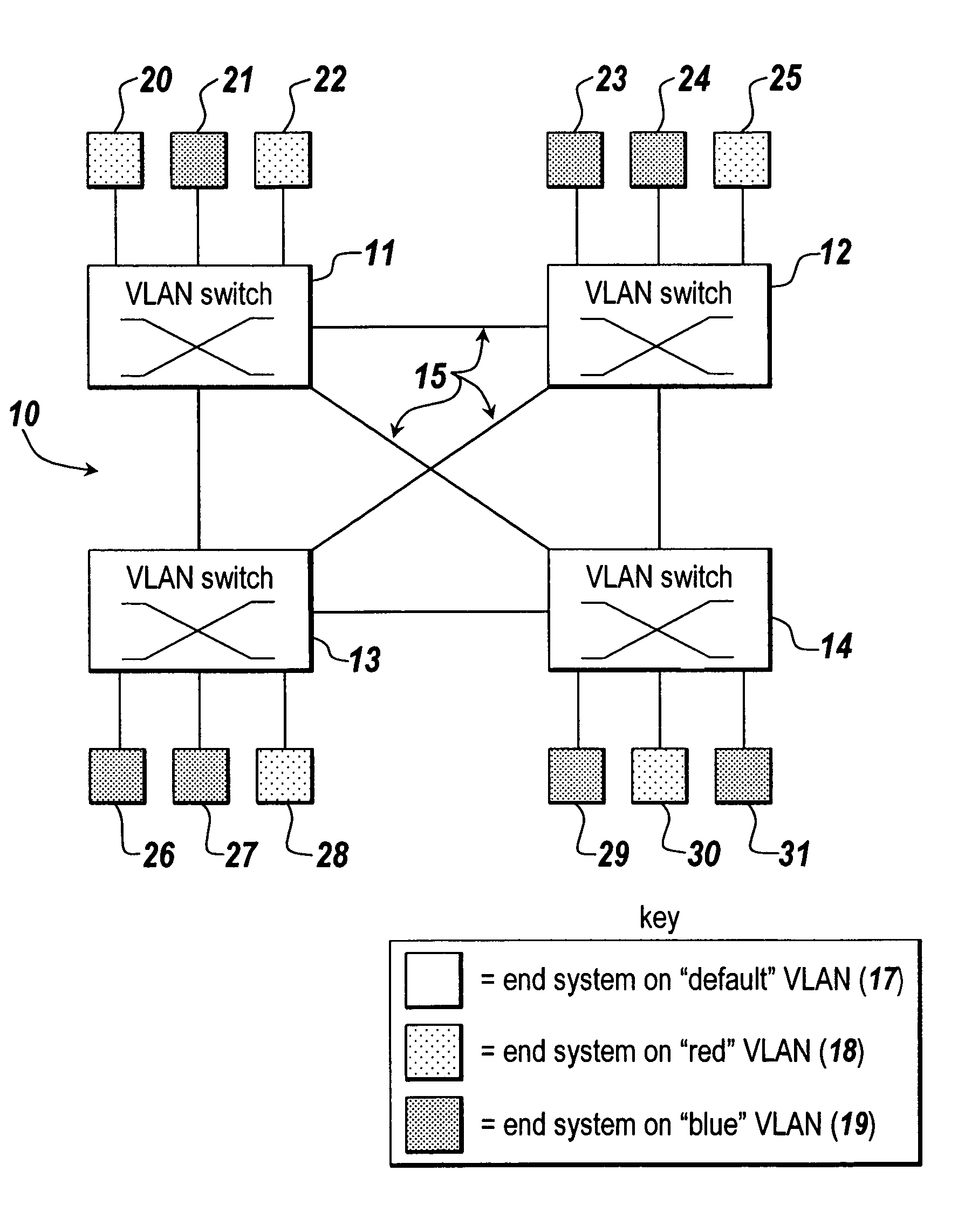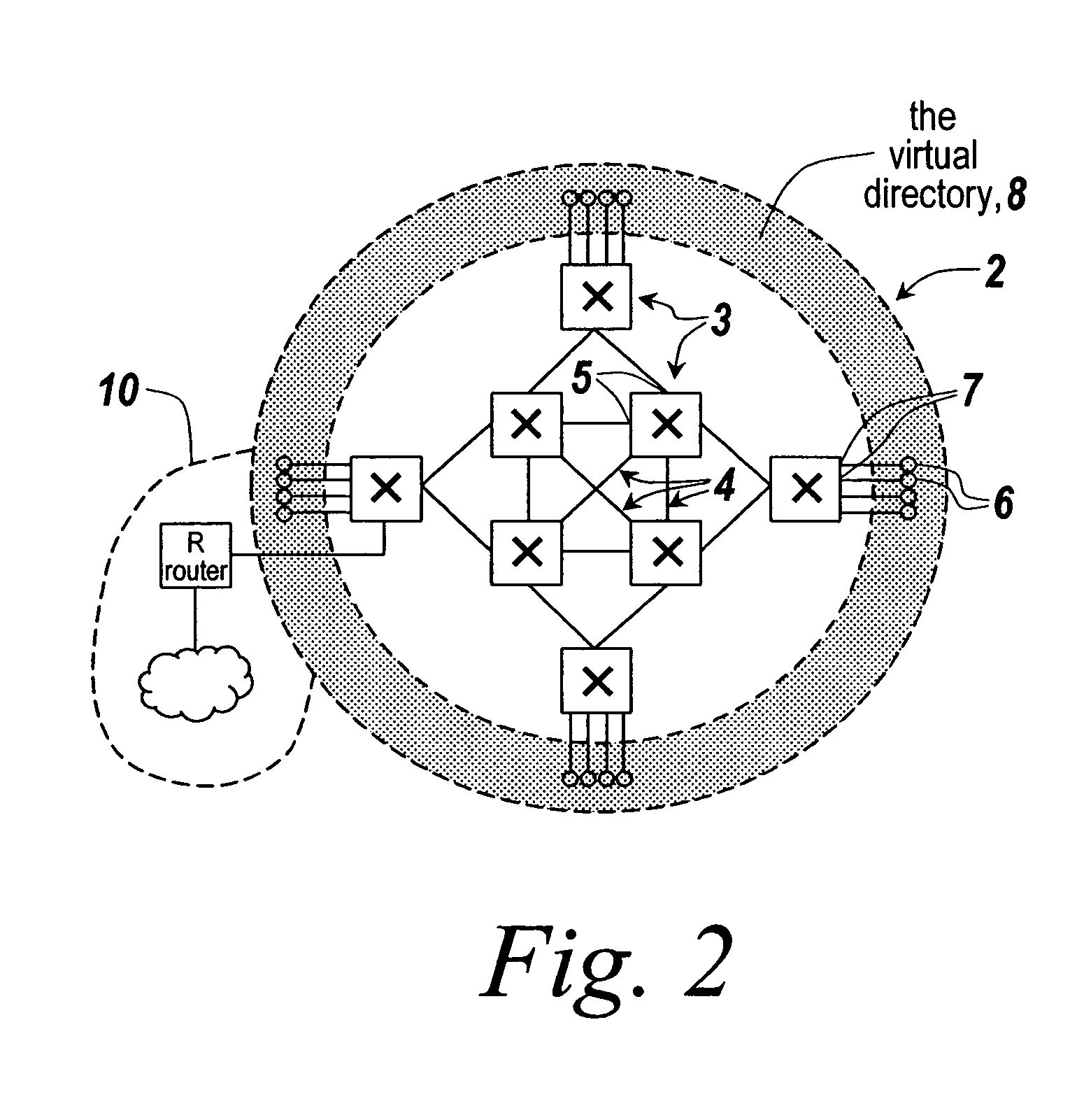Distributed connection-oriented services for switched communication networks
a technology of switched communication network and service, applied in the direction of data switching network, data switching details, instruments, etc., can solve the problems of large bandwidth consumption of multimedia and full-motion video applications, requiring real-time delivery, and sharing media network cannot provide the high bandwidth and quality of service required by the latest networking application and new faster workstations
- Summary
- Abstract
- Description
- Claims
- Application Information
AI Technical Summary
Benefits of technology
Problems solved by technology
Method used
Image
Examples
example
[0182]As illustrated in FIG. 8, a path select request may be made at a call-originating switch X1 (50), for a destination switch X5 (54). The protocol returns the best (meaning lowest aggregated metric) path to X5. This would be the path “e,d” (through switch X4 (53)), assuming like media and default metric assignments. Path “e,d” has a value of 10. Path “a,b,c” (through switches X2 (51) and X3 (52)) has value of 15 and would not be chosen. Should link “e” fail, the path “a,b,c” would take over and continue to provide connectivity. Should the value of the metric be manipulated such that path “a,b,c” and path “e,d” were of equal value, the protocol would return both to the path selection request.
[0183]In the flow state diagrams of FIGS. 9-11, describing the state machines for the ingress, intermediate and egress switching functions, the following conventions apply:[0184]any text in italic represents a variable used in the description;[0185]Cnx is an abbreviation for a connection key,...
example ip topology
[0243]FIG. 21 depicts an example IP network topology employing SFRS, which includes IP Hosts interconnected by routers and access switches and which covers the 134.141.0.0 network. The network is subnetted using the mask 255.255.255.0. There are four IP subnets shown. The switch backbone (220) is comprised of the 134.141.41.0 and 134.141.43.0 subnets. Two of the other subnets are found behind edge routers; 134.141.50.0 subnet (228) behind Router A (224), and 134.141.90.0 subnet (229) behind Router B (225). Access switches 1-3 (221-223) discover the IP routes via broadcasts within the IP broadcast group of the switch domain. IP routers advertise the reachability of networks by using IP RIP or OSPF. These advertisements are also collected and periodically resent.
[0244]The following IP RIP routing tables are for access switches 1-3:
Access Switch 1 IP Routing Table
[0245]
IP NetworkHopsNHopNetTypeLocation134.141.41.000.0.0.0StaticInternal134.141.43.000.0.0.0StaticInternal
Access Switch 2 I...
PUM
 Login to View More
Login to View More Abstract
Description
Claims
Application Information
 Login to View More
Login to View More - R&D
- Intellectual Property
- Life Sciences
- Materials
- Tech Scout
- Unparalleled Data Quality
- Higher Quality Content
- 60% Fewer Hallucinations
Browse by: Latest US Patents, China's latest patents, Technical Efficacy Thesaurus, Application Domain, Technology Topic, Popular Technical Reports.
© 2025 PatSnap. All rights reserved.Legal|Privacy policy|Modern Slavery Act Transparency Statement|Sitemap|About US| Contact US: help@patsnap.com



